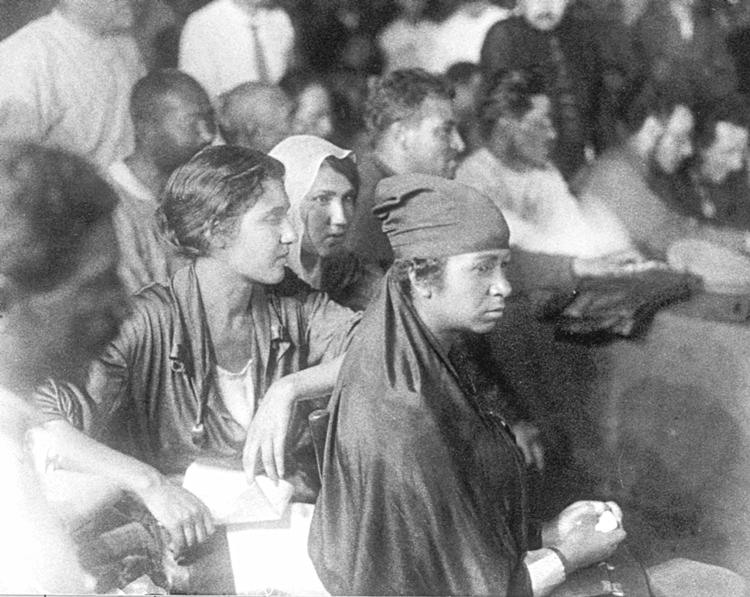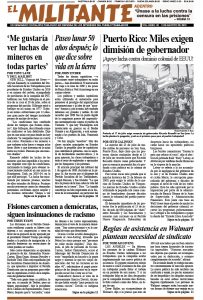
The selection below is from The First Five Years of the Communist International, vol. 1 by Leon Trotsky. It is one of Pathfinder’s Books of the Month for July. The Communist International was founded in 1919 by new parties seeking to emulate the 1917 Russian Revolution headed by the Bolshevik Party under V.I. Lenin’s leadership. Trotsky, a central leader of the Comintern while Lenin was alive, led the fight to continue Lenin’s proletarian internationalist course against the rising counterrevolutionary bureaucratic caste headed by Joseph Stalin. The excerpts are from a 1921 speech delivered at the Second World Conference of Communist Women. Copyright © 1945, 1972 by Pathfinder Press. Reprinted by permission.
Our enemies and our opponents are even saying that we have been completely and utterly mistaken in our calculations. We Communists had supposed and hoped, so say our opponents, that the world proletarian revolution would break out either during the war or immediately afterwards. But now the third year since the war is already ending, and while during this interval many revolutionary movements have taken place, it is only within one country, namely, in our own economically, politically and culturally backward Russia, that the revolutionary movement has led to the dictatorship of the proletariat — a dictatorship which has been able to maintain itself to the present day and which I hope will continue to maintain itself for a long time to come. In other countries the revolutionary movements have led only to the replacement of the Hohenzollern and Habsburg regimes by bourgeois regimes, in the form of bourgeois republics. Finally, in a whole number of countries the movement ebbed away in strikes, demonstrations and isolated uprisings which were crushed. In general, the mainstays of the capitalist regime have been preserved throughout the whole world, with the sole exception of Russia.
From this our enemies have drawn the conclusion that since capitalism hasn’t collapsed as a result of the World War in the course of the first two to three postwar years when the balance sheets were being drawn, it follows that the world proletariat has demonstrated its incapacity, while, conversely, world capitalism has demonstrated its capacity and power to retain its positions, to reestablish its equilibrium.
And at this very moment the International is discussing the question: Will the period immediately ahead, the next few years, entail the reestablishment of capitalist rule on new and higher foundations? or will it entail a mounting assault by the proletariat upon capitalism, an assault which will bring about the dictatorship of the working class? This is the fundamental question for the world proletariat and, consequently, also for its women’s section. … [O]ne thing, I believe, is completely clear to us, to Communists, to Marxists. We know that history and its movement are determined by objective causes but we also know that history is accomplished by human beings and through human beings. The revolution is accomplished through the working class. Essentially history thus poses the question before us in the following way: Capitalism prepared the World War; the World War erupted and destroyed millions of lives and billions of dollars’ worth of national wealth. It has shaken everything. And here on this half-ruined foundation, two basic classes are locked in struggle — the bourgeoisie and the proletariat. The bourgeoisie seeks to restore capitalist equilibrium and its class rule; the proletariat seeks to overthrow the rule of the bourgeoisie.
It is impossible to settle this matter with pencil in hand, like adding up a list of groceries. It is impossible to say: History has taken a turn toward the reestablishment of capitalism. It is only possible to say that if the lessons of the entire preceding development — the lessons of the war, the lessons of the Russian Revolution, the lessons of the semi-revolutions in Germany, Austria and elsewhere — if these lessons go for nought, if the working class once again agrees to keep its neck within the capitalist yoke, then, perhaps, the bourgeoisie will be able to restore its equilibrium, by destroying the civilization of Western Europe and by transferring the center of world development to America, to Japan, to Asia. Entire generations would have to be destroyed in order to create this new equilibrium. To this end the diplomats, the military men, the strategists, the economists, the brokers of the bourgeoisie are now directing all their efforts. They know that while history has its profound causes, it is nonetheless made through human beings, through their organizations and through their parties; and, consequently, our Congress and your Women’s Conference have gathered here precisely in order to introduce into this unsettled historical situation the certainty of the consciousness and the will of the revolutionary class. This is the gist of the moment through which we are living and herein is the gist of its tasks as well. …
In the progress of the world labor movement, women proletarians play a colossal role. I say this not because I am addressing a women’s conference but because sheer numbers indicate what an important part the woman worker plays in the mechanism of the capitalist world — in France, in Germany, in America, in Japan, in every capitalist country. … And just because of this, in the years of the colossal world revolution this section of the proletariat can and must become the most active, the most revolutionary, and the most initiative section of the working class. …
Consciousness lags tardily behind the objective events. We see this before our very eyes. Nevertheless the logic of history will cut its way through to the consciousness of the woman toiler both in the capitalist world and in the Asiatic East. And once again it will be the task of our Congress not only to reaffirm anew but also to formulate factually and precisely that the awakening of the toiling masses in the East is today an integral part of the world revolution, just as much so as the rising of the proletarians in the West.

